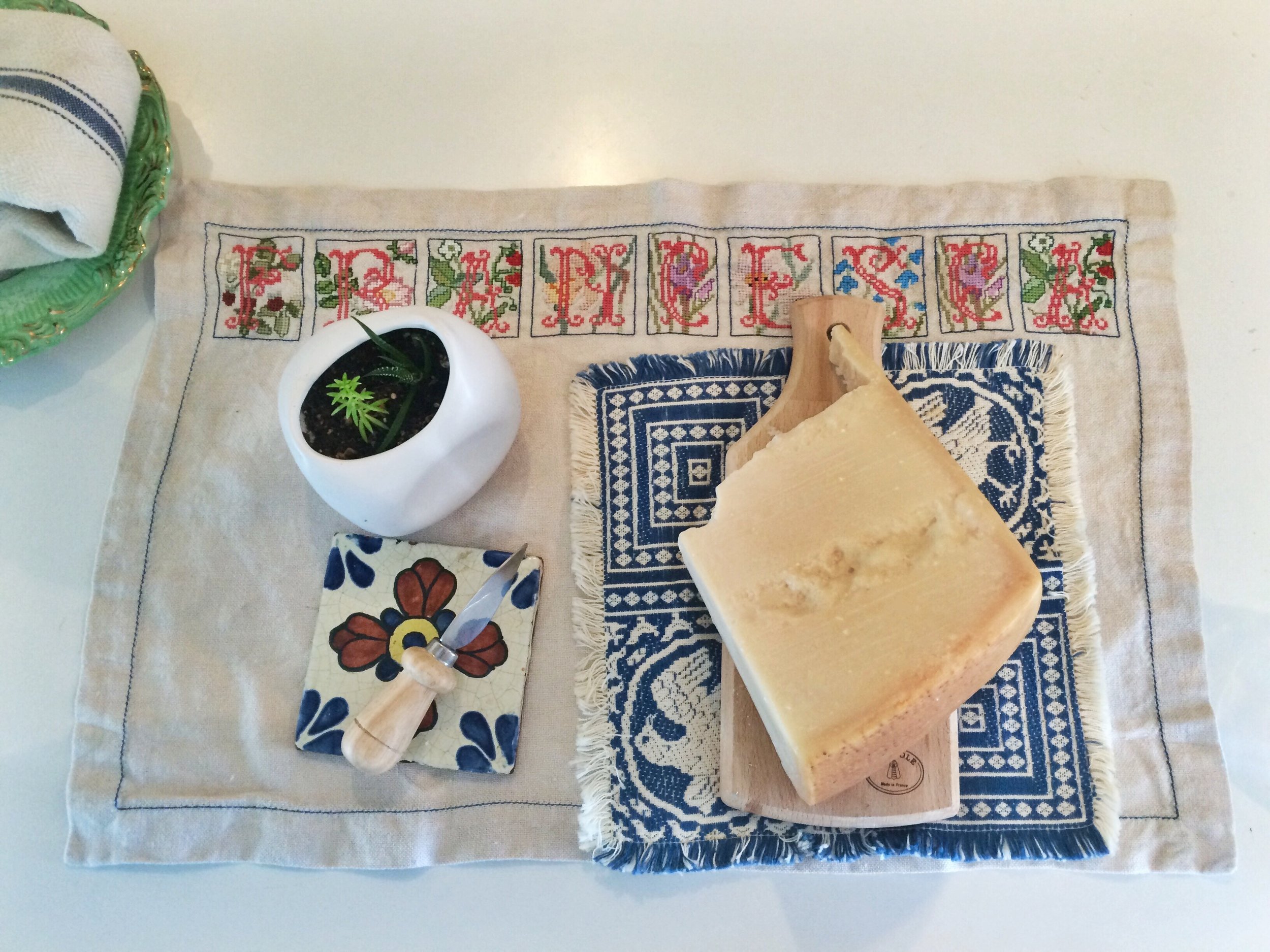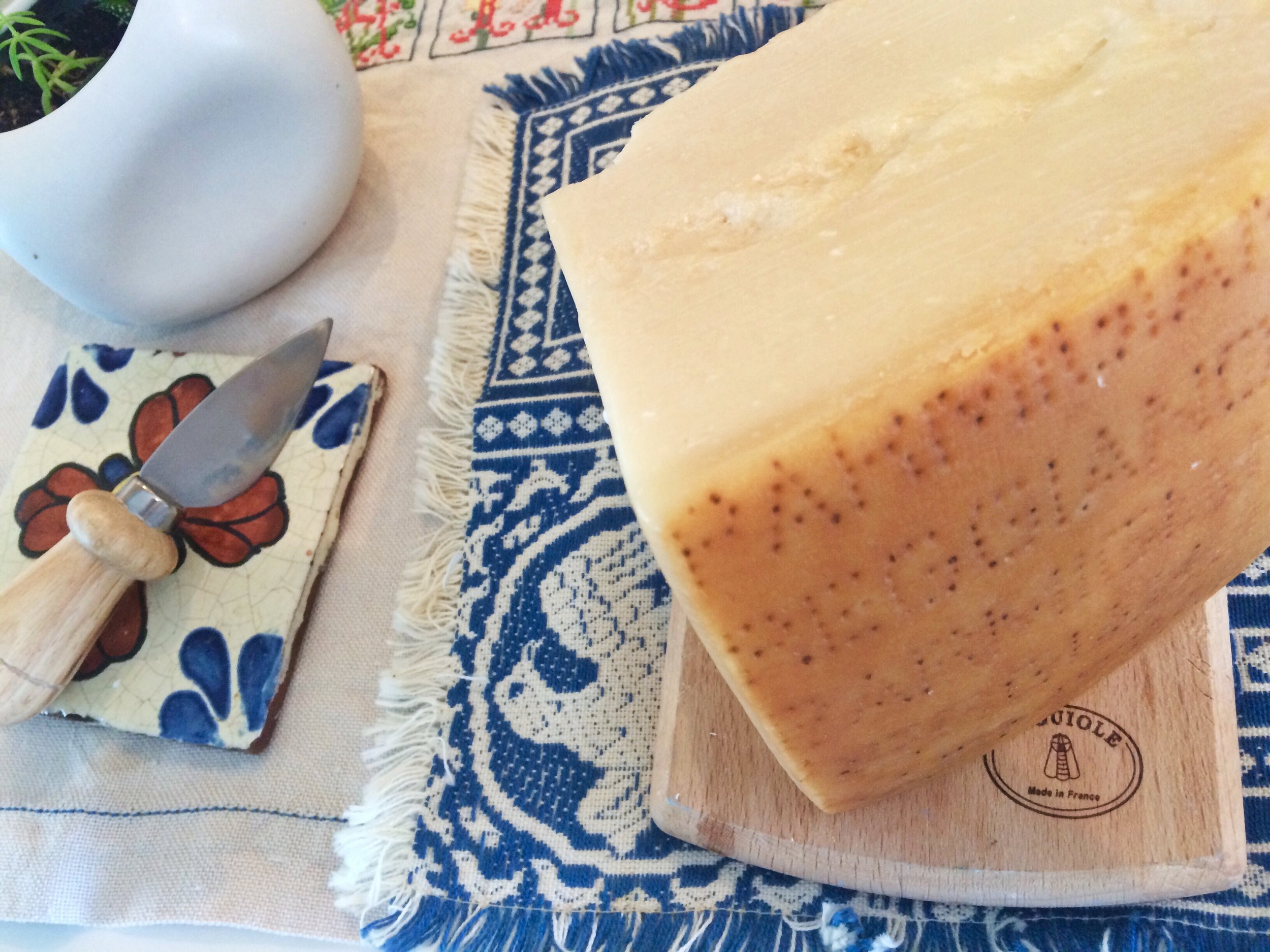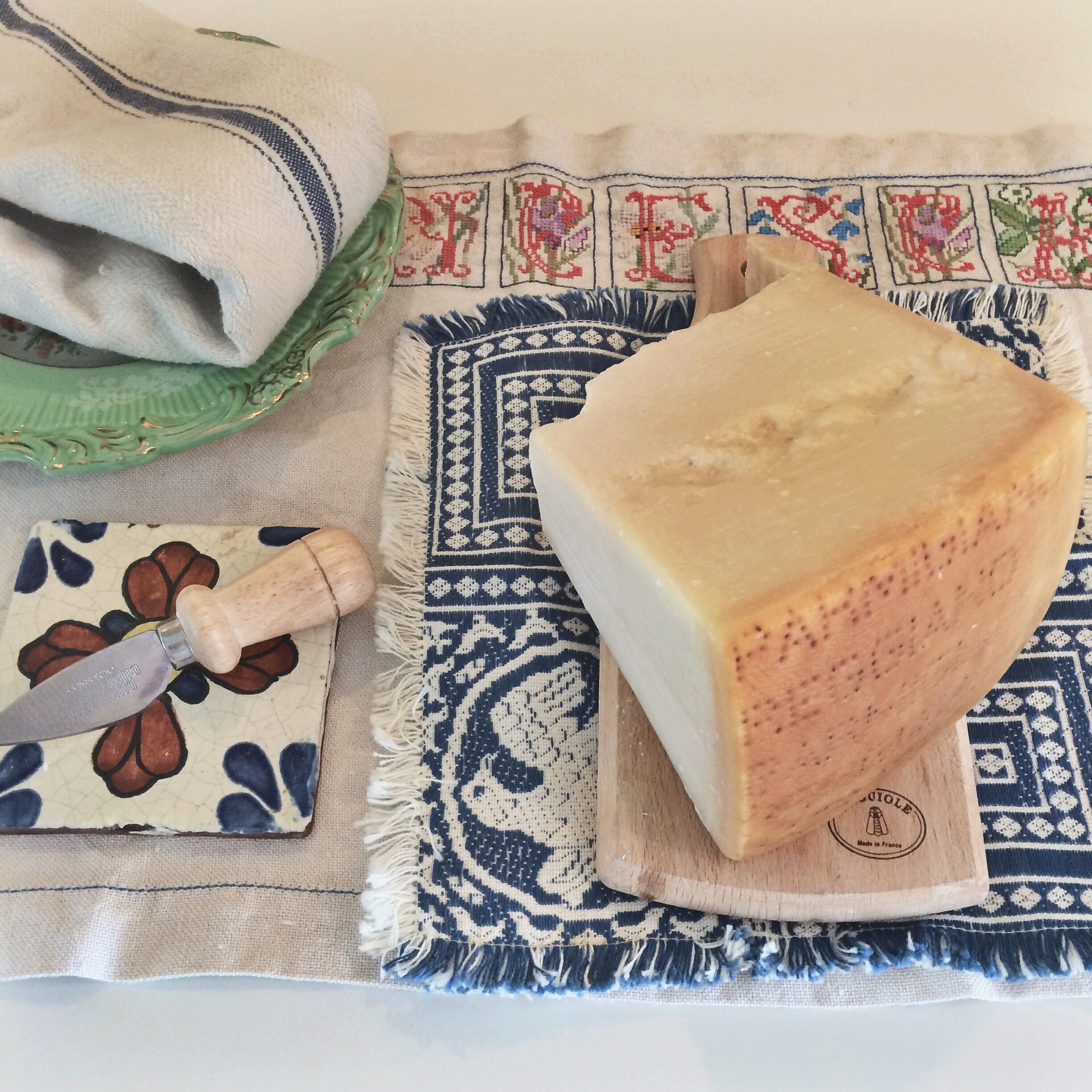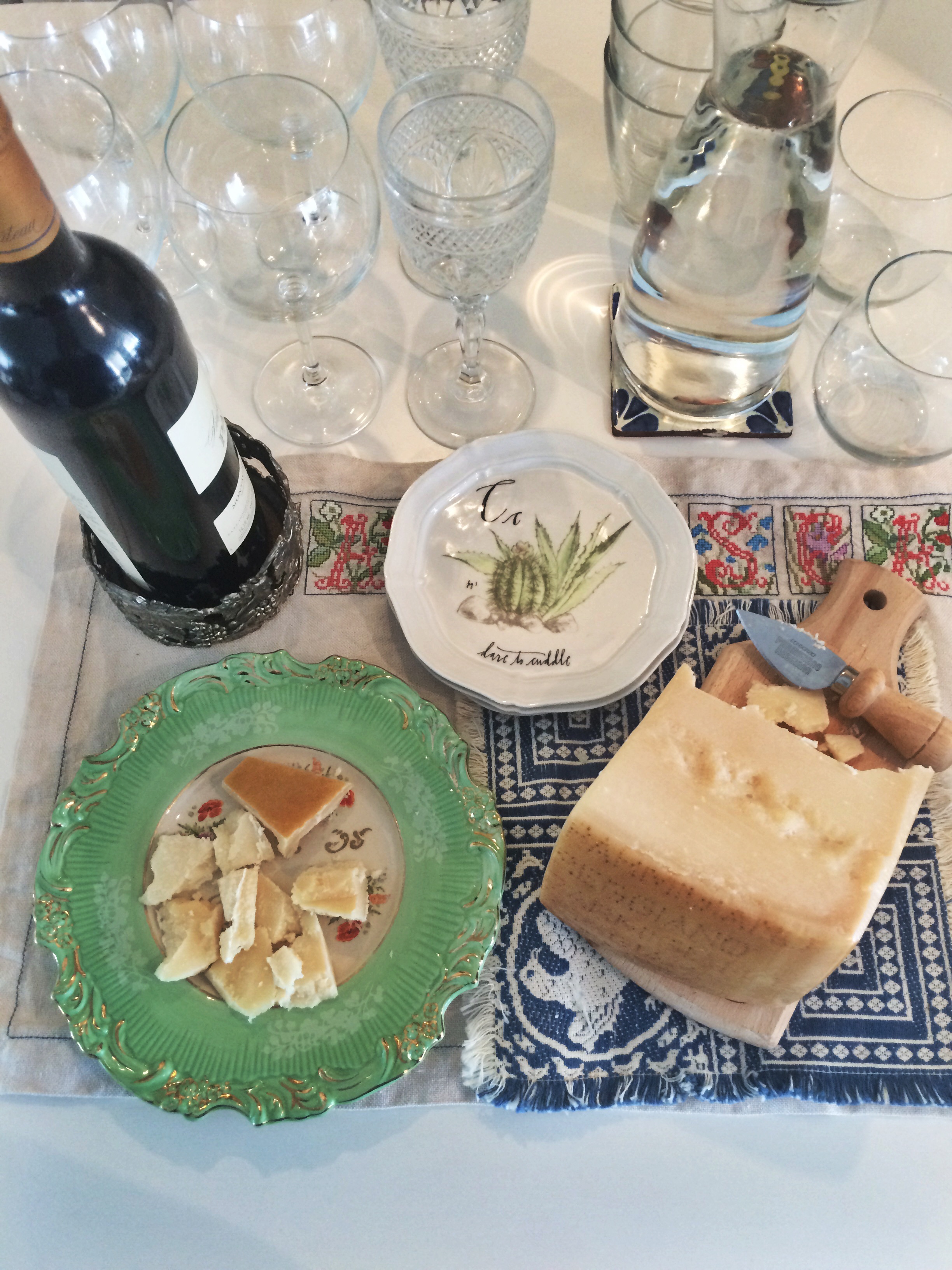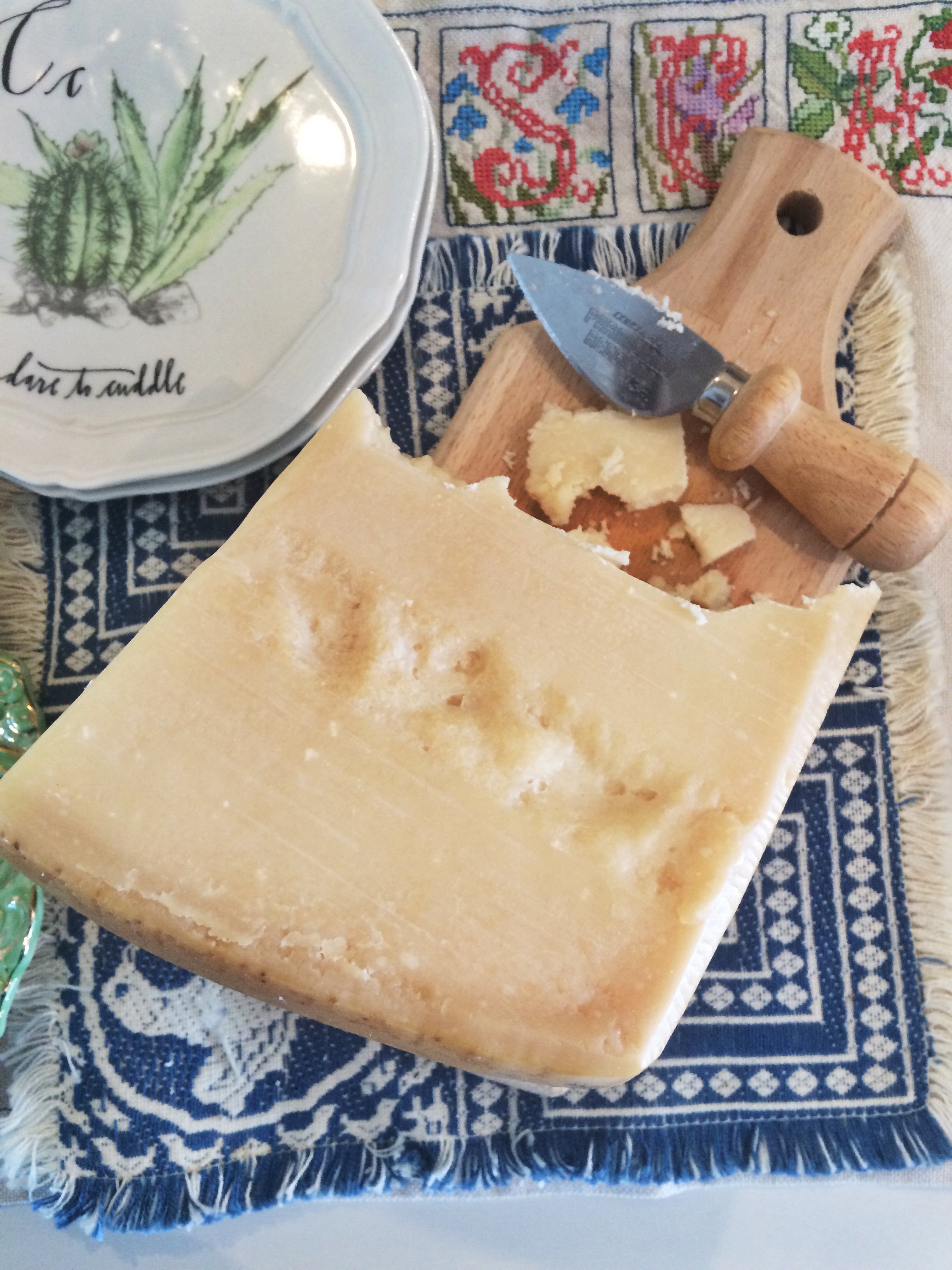Tonight in Italy is #PRnight2016 that is the night dedicated to celebrate the one and only Parmigiano Reggiano #theonlyparmesan
I accepted the investiture of Parmigiano Reggiano Ambassador as it is: a diplomatic role of story teller and in the next three months it is my intention that you all become acquainted with the Parmigiano Reggiano. It's just a cheese, you say, but it's ingrained in our culture and lifestyle, in slow food and zero mile approach to nutrition that it can be adapted to many other cultures and experiences. But as usual, you must follow some rules.
Really, the only thing I have to say is that there is only ONE parmesan, which is the one produced in the province of Parma, in Emilia Romagna (the one in the middle of boot, north of Tuscany and south of Lombardia). Parmigiano means 'from Parma'.
Why? Because to produce it there’s one rule above all that must be respected: use whole milk from the cows that live there. Very simple: soil, sun, cold, winds, trees, vegetation, seasons it’s a whole ecosystem that cannot be reproduced anywhere else.
Thinking of what parmigiano means to us, I came down to many depictions and adjectives, none of them is related to calories-count, fat content or tin container in the supermarket aisle.
CURIOSITY: Italian pediatricians recommend introducing Parmigiano Reggiano to 9 mo children for its content of calcium, protein, vitamins easy to digest.
I know some friends will be shocked or maybe even offended, “here she comes again, with the Italians do it better” but if you spar me a few minutes, you’ll get the point.
Convivial is the first adjective that comes to mind because:
1. There’s no Italian fridge without a chunk of parmigiano
2. My maternal grandparents
3. My childhood
Imagine being in front of this nearly 4-pound slice from a 14 months Parmigiano Reggiano wheel at room temperature? All I can think of is a house full of people, wine and chatter, bread crumbles allover, maybe a fireplace, laughter and clicking glasses, something organized last minute, where friendship or family are more important of the formality of all glasses and plates matching.
Some of my friends and people that I have met in these two American decades of my life, had no idea THAT was parmigiano. It comes down to a cultural divide that the cheese itself will reconcile.
My story is very simple, and it’s a window to a typical Sunday in an Italian province.
After Sunday mass, we’d go to my grandmother’s for lunch, the five of us and it was a jovial and happy closure of the week (except for my father, the son-in-law, but that’s for a different time.) We’d buy the fresh pastries at the “pasticceria” and we’d make it to my grandparents’ apartment where the aroma of ragu with the bone of the “arista” simmering was mixed with the pungent smell of the shoe creams my grandpa used to polish his repertoire for the week, dark brown and black.
It all revolved around the kitchen and the covered balcony while the table was already set with embroidered table cloth and linen napkins in the living, where life was shared with a slow lunch, lots of chatter, maybe figurines, games, lots of laughter and screaming, no TV and limited infiltration of the scents of the kitchen.
When the water was boiling and grandma was ready to “buttare la pasta”, pour salt and past in to cook, my grandfather’s task was one of the best ones I have ever enjoyed: grating the parmesan to pour over the steaming pasta on the table.
The best part of that grating business was that he had two different chunks of parmigiano, quite the treat. My grandmother would always buy two different ages, 24 months to grate and 14 months “per I bimbi”, that is “for the children”.
And boy if we knew!
We would roam around grandpa like bees around the fig tree, he would let us have chunks “without anyone seeing you” (and by that he meant his daughter, aka my mother, because if we ate before sitting at the table, we wouldn’t eat the meal.) And that wasn’t it: when we’d seat at our designated post, which sometimes was a separate table just for the kids, the secret was to look on the main course plate, hidden by the pasta bowl, because chances were it was decorated by mini morsels of parmigiano all around.
Now that’s my story, a very sweet and tender one because yes my grandfather Bruno was a sort of a Santa all year round, but I am sure thousands of my Italian peeps and readers have their own grandpa version of the Parmigiano Reggiano.
HOW TO ENJOY THE 14 MONTHS:
· Room temperature
· Over a wooden board
· Cut in bites
· Enjoy profusely
· Red wine (don’t tell my brothers, but I even go with prosecco and rose’ in the summer)
· In the fall: pears, grapes, olives, the first sausages, artichokes or mushrooms under oil
· In the spring and summer: strawberries and the real aceto balsamico or why not figs
· Aperitivo and also when you have last minute friends over, remember it’s a perfect meal that provides the right amount of calcium and there’s no kid who doesn’t like it
SOME THING YOU NEVER DO (to look like a pro):
- Ask to pour it over any pasta with seafood or shellfish. That’s one of those things like asking for a cappuccino after a meal, that’ll give you the foreigner passport.
- Throw the rind away. Secret is, when you make il minestrone, the vegetable soup, you scrape the dirt off the rind and throw it in and let it simmer. You are welcome.
THE ITALIAN WAY: according to our grandmother’s recommendations, you don’t buy grated cheese punto!, because “you don’t know what they grate, they use the left-over of what they cut from the rind” and I spare you from the rest of the horrifying conspiracy theories of what we were told it was contained, but rat’s pee was the most decent.
TRUTH is the real Parmigiano Reggiano cannot contain shelf-stabilizing additives nor can be dehydrated. NOW you know why the whatever brand powdery stuff they sell in a non-refrigerated aisle at the supermarket is a sign that it’s not an Italian thing. Makes sense?
MAKE IT TO THE COMMENTS, I WANT TO KNOW YOUR STORY OR HOW THIS WILL MAKE YOU CHANGE YOUR FAMILY STORY

